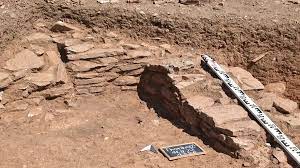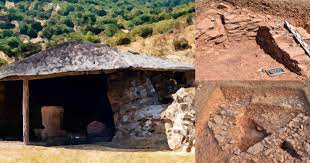Iron Age House From the 10th Century BC Discovered in Greece

Islamabad: Numerous stones were in the largest room, which could have once been a paved courtyard. Credit: Thorikos Archaeological One of the earliest Iron Age houses in Greece has recently been discovered by archaeologists at Thorikos, an ancient village near the city of Lavrion, south of Athens.
The discovery was made by researchers from the University of Göttingen, under the Thorikos Archaeological Project Gent-Göttingen.

Since there have never before been any building structures from this period discovered in Attica, this find provides fresh insight into the early history of Greece.
The ancient village is close to a historic silver mine. The region is home to Mycenaean dome tombs and a classical settlement with homes, businesses, temples, and graveyards.
2019 saw the discovery of an uncovered wall corner that, at first glance, appeared to point to a traditional tomb building.
However, additional investigation showed that it was a building from the 10th to 9th centuries BC, not a burial site.

Researchers have been looking into the building’s size for the past year and have located five to six rooms. Numerous stones were in the largest room, which could have once been a paved courtyard.
Its use between approximately 950 and 825 BC was substantiated by analysis of the inorganic and organic characteristics of the rocks.
The presence of grain-grinding stones suggests that the building once served as a residence. The rooms’ intricate layout suggests a highly developed civilization or a well-established social structure.
The ancient village where the iron-age house was uncovered was only 20 meters above the seashore, indicating no immediate threat from the water. The safer hilltop plateau was more than 100 meters high and wasn’t populated until the 8th century BC.
Geophysical research uncovered a tomb from the fifth century BC on the southeast slope.
Additional scientific investigations will shed light on whether animal breeding occurred at the location and whether silver ore, which is pretty standard in the region, was mined during that time.
The theater of Thorikos dates to the end of the Archaic era
Thorikos is an almost-forgotten archaeological site, where the oldest known theater in existence still stands proudly, just north of the ancient mining town of Lavrio and east of Athens.
The theater of Thorikos dates to the end of the Archaic era between 525 and 480 B.C.
But that is not its only distinction. Unlike Greek theaters built in later eras, it is elliptical rather than circular and has a rectangular rather than a circular orchestra.
With twenty-one rows of seats, the theater had an impressive seating capacity of four thousand people when it was constructed.
In antiquity, Lavrio was famed for its rich silver mines, which are some of the oldest in the world. Archaeologists have unearthed evidence of mining in the area dating back to the year 3,200 BC.
It was from these silver resources that Athens obtained much of its wealth in the Classical Period. This wealth went on to fund their massive fleet of two hundred triremes, allowing Athens to become the greatest naval power in the ancient world.
There is evidence of lead extraction there beginning in the 3rd millennium BC and of silver beginning in 1500 BC.
The ancient city’s center and its acropolis are situated on Velatouri Hill next to the theater.





